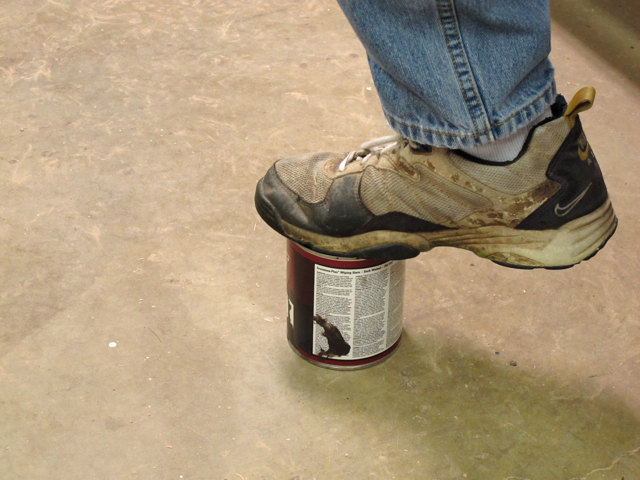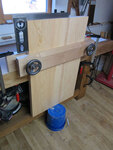We may receive a commission when you use our affiliate links. However, this does not impact our recommendations.
Here’s a tip that you will thank me for if you aren’t already doing it. When you want to secure the lid on a paint, stain or finish can, step on it rather than hammer it closed. Using your body weight to close the can has two advantages.
First, you don’t have to have a hammer handy. Your foot is always with you.
Second, and more importantly, you don’t risk squirting paint or finish all over you and other objects when there is overspill in the recessed lip at the top of the can.
Here are some supplies and tools we find essential in our everyday work around the shop. We may receive a commission from sales referred by our links; however, we have carefully selected these products for their usefulness and quality.












Good tips. I’ll remember the risk of spatter, although I don’t get that because I always swab out the groove before restoring the lid – ever had a lid glued in by dried paint? However I have seen too many lids deformed and rendered non-functional by repeated applications of hammer, mallet, etc. So a scrap of wood broad enough to distribute the weight is what I now always use, pressing with just enough body weight to firmly seat the lid.
Sorry, that’s not a very good tip at all. First, you shouldn’t be working out of a can. If you do and get anything in the groove, clean it out BEFORE you put the lid back on. That way, 1) you won’t squirt whatever is in the can all over yourself, and 2) your can won’t “weld” itself shut from the stuff drying in the groove and wedging the lid in place. Second, you should always use the proper tools for the job. In this case, it is a mallet to properly seat the lid.
A foot doesn’t have the finesse to insure a proper seating of the lid.
My father taught me to step on cans to close them. I haven’t had him around to ask why since the late 1950s but have continued to do it his way. His father did it that way before him. Now I know why. No spattered paint or varnish.
He had one added bit to the technique, however. Place a scrap board over the can (about as wide as the can). Nothing gets on the sole of your shoe, and the board distributes your weight across the rim of the can more evenly than just your sole and doesn’t “give” against the rolled edge.
This is a good tip, but Mikey has a point. I just put a double-layered paper towel over the top of the can before I step on it. Tracking paint into the rest of the house, or even around the shop is not cool.
Still, in my case, I must admit being a bit neater with the paint can in the first place is an even better idea!
(Again, I’m with Mikey, so don’t even ask me how I know this…)
But put a rag over it. Or you will track paint everywhere. No, I don’t want to think about why I know this.